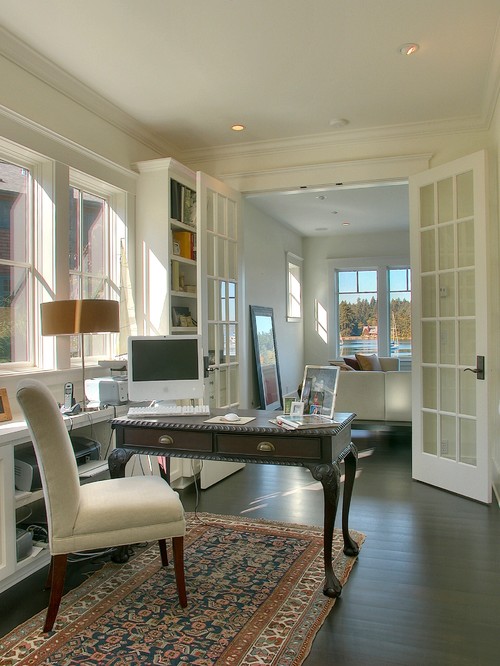What are French doors?
If you head to your local home improvement store and ask for a French door, what you’re actually going to walk away with are two doors. That’s because French doors are two adjoining doors with glass panes from top to bottom.
That also means that typically, the door handles are in the center spot, where the two doors meet, and that the doors open away from one another. Some sliding-glass-door makers have created a twist on the old classic, creating glass doors that meet in the middle as French doors do, but that open by sliding away from each other.
While many doors are solid or have just a few panes of glass, blocking most of the light that would enter through the doorway, the largely glass makeup of French doors allows plenty of light to pour into the room.
Where did French doors come from?
Unlike French fries, which actually originated in Belgium, French doors really are French in name and in their history. The first French doors are said to have been designed in the 17th century, during the French Renaissance period.
Should you install French doors?
Like most design choices, installing French doors comes down to personal aesthetics and the overall design of a home.
“The door itself is very reminiscent of the Renaissance architecture style, which boasted an emphasis on symmetry, proportion, and geometry which are much like the five principles of design that we use today—rhythm, harmony, balance, scale, and proportion,” James notes. “For example, the French door provides a consistent visual experience—that’s rhythm—as the design imitates that of the mullions on a window.”
As for their benefits, the windows of the French doors can turn a small, dim space into one that’s significantly brighter. Adding French doors that lead to a backyard or patio can trick the eye, making a small space seem larger than it is. French doors are also an obvious choice for anyone hoping to bring more of the outdoors inside their home.
Where to install French doors
As an exterior door: Whether they lead to a balcony or to your backyard, French doors can open up an exterior wall and give the sense in a room that you’ve extended the space outward. Likewise, they can make a home look more inviting from the outdoors.
And you can’t beat the easy access, or the views they provide onto gardens and the backyard.
As an office door: “French doors are very popular as [home] office doors, giving you the peace and quiet in your home that you desire while trying to get work done, but still providing you a view outside of your home office,” James suggests.

Between bedroom and living space: Adding French doors that separate the master bedroom from living or dining areas is a great feature and one that will wow potential home buyers, Solomon says.
“French doors are one of my favorite ways to create a harmonious flow between interior and exterior living,” he notes. Just don’t forget the curtains for a little bedroom privacy!
Cost of French doors—and resale value
Like most design features, door prices vary based on size and materials. But you can expect to pay about $500 on the low end for a new prehung set of French doors, Solomon says, with the price rising from there for custom fits and requests. All in all, they’re a good investment in your home, since they don’t cost much but add significant resale value, so they almost pay for themselves.
Whichever doors you get, make sure they’re properly hung and fitted to install a tight seal, Solomon warns, since doors that aren’t a good fit can be a major source of heating and cooling losses.

